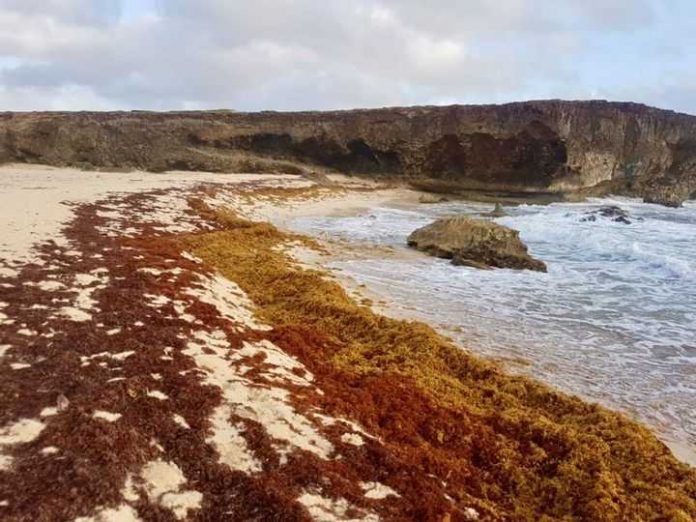Sargassum is a planktonic (free-floating) seaweed found in the tropics. While at sea, sargassum patches are a valuable habitat for many sea creatures. Birds, fish, turtles, and crustaceans use the floating mats for breeding, food, and refuge.
Sargassum is beneficial when it comes ashore in small amounts. It can provide food for shorebirds and crabs, as well as building up the sand to help prevent coastal erosion. Seaweed mixed into the sand provides a healthy environment for beach stabilizing plants like sea vine (Ipomoea pes-caprae) and sea purslane (Sesuvium portulacastrum).
Some islands in the Caribbean, including our neighboring islands Curacao and Bonaire, have enclosed bays where the sargassum can accumulate to create a toxic environment. If rotting seaweed remains in the water it deprives the other organisms in the bay of oxygen and sunlight.
Luckily Aruba does not have such bays and the large majority of the sargassum washes up and then is taken away again by changing currents. If you encounter sargassum on our beaches you can check if there are any trapped animals and release them to the sea. You can also help remove plastics by picking it up and disposing of it properly.
About Aruba National Park- Arikok
Surrounding Mt. Arikok near the center of the island is a natural preserve which features some of the oldest Arawak drawings, as well as trails that showcase Aruba’s great variety of plants and animals like the divi-divi and kwihi trees, rare and exotic cacti, aloe, tropical flowers, birds and iguanas. There’s also an old Aruban “cunucu” house, “cas ditorta,” made of mud and grass. Together with the Coastal Protection Zone, Arikok National Park encompasses 18 percent of the island.
There is a great geological variety within the park. The main aspects are the rough hills of the volcanic Aruba lava formation, the mysterious rocks of the batholithic quartz-diorite/tonalite, and the limestone rocks from fossilized coral. The two tallest hills on the island are situated within the park. Jamanota hill 188 meters (617 ft) and Arikok hill 176 meters (577 ft).
Source: Aruba National Park Foundation

















